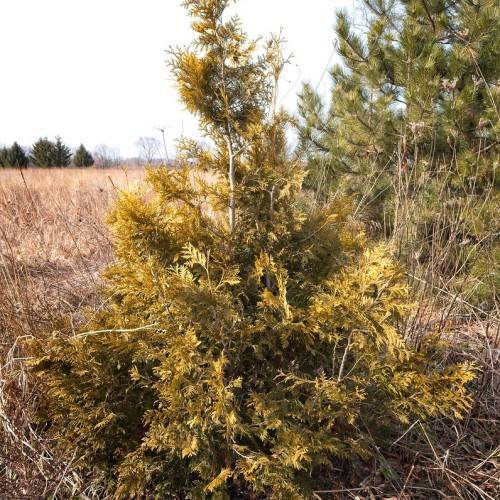
American arborvitae
Thuja occidentalis 'Lutea'
Cycle:
Perennial
Watering:
Frequent
Hardiness Zone:
2 - 7
Flowers:
Flowers In Spring
Sun:
Full sun, Part sun/part shade
Soil:
Sandy Loamy Clay Rocky
Cones:
Yes
Leaf:
Yes
Growth Rate:
Moderate
Maintenance:
Low
Drought Tolerant:
Yes
Care Level:
Low
watering
American arborvitae is known to be a low-maintenance, drought tolerant evergreen that benefits from occasional watering during periods of drought. It is best to water American arborvitae deeply but infrequently, around once per week during periods of dry weather. The soil should be kept moist but not waterlogged; as such, it’s best to check the soil in order to determine when the tree needs water. If the top few inches of soil are dry, it needs to be watered. In addition, in the summer months when temperatures may be higher, it may be necessary to water the tree more frequently.
sunlight
American arborvitae should receive a minimum of 4-6 hours of direct sunlight per day when planted in full sun. When planted in partial sun, this species prefers at least 4 hours of dappled sunlight or filtered shade. For optimal growth, it should be placed in a spot where it will get some morning sun and afternoon shade. During the summer months, it will benefit from some afternoon shade to prevent scorching in hot climates.
pruning
American arborvitae (Thuja occidentalis 'Lutea') requires minimal pruning to maintain a healthy and attractive form. Pruning should be done in late winter or early spring, before new growth begins. During this time, selectively remove dead, diseased, or damaged branches, as well as any crossing, weak, or otherwise inferior shoots. A light shearing of approximately 1-third of the total foliar growth is also recommended, although more may be necessary to create a desired shape or hedge. Prune out any interior branches or buds and thin the canopy to promote airflow and reduce the potential for pests and disease.
